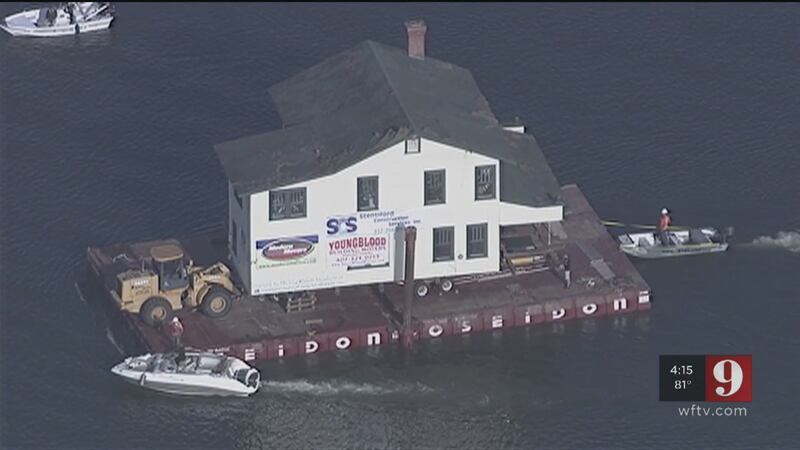OCKLAWAHA, Fla. — Engineers floated the historic Ma Barker house on a barge Thursday morning, two miles across Lake Weir to its new resting place in the Carney Island Recreation and Conservation area on S.E. 115th Avenue in Ocklawaha.
The Marion County home is where Kate "Ma" Barker and her son, Fred, took part in the longest shootout in FBI history in 1935. %
%
Barker ran the “Barker Gang” and rented the house to use as a hideout.
After thousands of bullets were fired in and out of the home, the Barkers were found dead inside.
Marion County Parks and Recreation spokesman Jim Couillard said the process was expected to take about 20 to 30 minutes and the home was anchored “down right in place.” %
%
Getting the two-story house across the lake cost upward of $235,000, officials said.
"It’s a pretty big deal. It's an icon," said neighbor Ivonne Schlachter.
Along with moving the building, plans were in motion to restore the home and open it to visitors, who will be able to see the original bullet holes in the furniture and walls from the four-hour shootout.
“It’s pretty neat,” Ocala resident Jeray Norman said. “There’s a lot of our history that’s being destroyed and (the house) just seems to be falling down and the fact that they are willing to take the time to move this house, I like it. It’s pretty cool the fact that they are trying to preserve a little bit of local history.”
The contractor said the total weight of the barges, the house and the loader was 188 tons, and only eight crew members were used to guide the home to shore.
Stentiford said it took two weeks and three days to get the home from its original site and onto the barges. The house was moved with the original furniture, minus one china cabinet, inside.
"Everything is just like it stopped in time, and it’s neat to have our hands in the mix and be a part of it," said Stentiford.
Crews overcame the largest hurdle of getting the home to the shore. They're building a bridge to get it onto the foundation, and after that the restoration begins.
Crews said that moving it on water was the cheapest option and the most practical.
If done on land they would have had to cut down low-hanging oak trees and move power lines.
Cox Media Group








